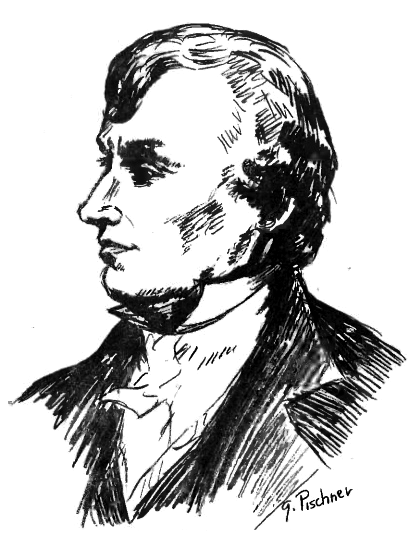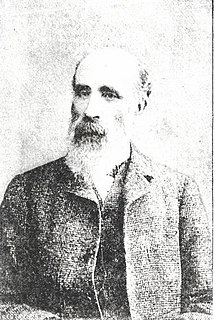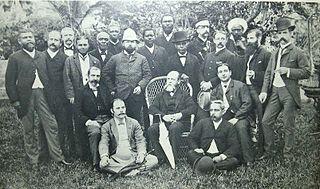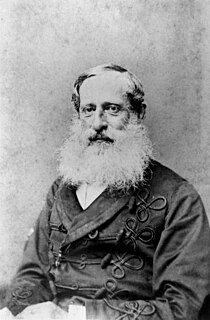Sierra Leone first became inhabited by indigenous African peoples at least 2,500 years ago. The dense tropical rainforest partially isolated the region from other West African cultures, and it became a refuge for peoples escaping violence and jihads. Sierra Leone was named by Portuguese explorer Pedro de Sintra, who mapped the region in 1462. The Freetown estuary provided a good natural harbour for ships to shelter and replenish drinking water, and gained more international attention as coastal and trans-Atlantic trade supplanted trans-Saharan trade.

The Society for the Colonization of Free People of Color of America, commonly known as the American Colonization Society (ACS), was a group established in 1816 by Robert Finley of New Jersey which supported the migration of free African Americans to the continent of Africa. The society in 1821–1822 helped to found a colony on the Pepper Coast of West Africa, as a place for free-born or manumitted American blacks. The ACS met with immediate and continuing objections from such African-Americans as James Forten and David Walker, who wished to remain in the land of their birth, saw colonization as a racist strategy for protecting slavery and purging the U.S. of its black citizens, and preferred to fight for equal rights at home. Colonizers were also met with resistance and attacks from those already living in and around the areas being colonized. There was some religious support and missionary efforts were part of the colonization. Disease was a major problem, with Liberian immigrants suffering the highest mortality rates in accurately recorded human history. Of the 4,571 emigrants who arrived in Liberia from 1820 to 1843, only 1,819 survived until 1843.

Samori Ture, also known as Samori Toure, Samory Touré, or Almamy Samore Lafiya Toure, was a Guinean Muslim cleric, and the founder and leader of the Wassoulou Empire, an Islamic empire that was in present-day north and south-eastern Guinea and included part of north-eastern Sierra Leone, part of Mali, part of northern Côte d'Ivoire and part of southern Burkina Faso. Samori Ture was a deeply religious Muslim of the Maliki jurisprudence of Sunni Islam.

British West Africa was the collective name for British colonies in West Africa during the colonial period, either in the general geographical sense or the formal colonial administrative entity. The United Kingdom held varying parts of these territories or the whole throughout the 19th century. From west to east, the colonies became the independent countries of The Gambia, Sierra Leone, Ghana and Nigeria. Until independence, Ghana was referred to as Gold Coast.

Parliament of Sierra Leone is the legislative branch of the government of Sierra Leone. It is principally responsible for making laws. The Sierra Leone parliament consists of 146 members, of which 132 members are directly elected from across Sierra Leone's 16 Districts. The Parliament is led by the Speaker. The current Speaker of Parliament is Abass Bundu (SLPP). The current elected 132 Ordinary members of parliament are composed of members of the All People's Congress, the Sierra Leone People's Party which are the two largest political parties in Sierra Leone plus two other parties, the National Grand Coalition and the Coalition for Change and finally, three Independent members who were not elected under any party.

James Johnstone Barnet, was the Colonial Architect for Colonial New South Wales, serving from 1862 to 1890.

The Colony of Vancouver Island, officially known as the Island of Vancouver and its Dependencies, was a Crown colony of British North America from 1849 to 1866, after which it was united with the mainland to form the Colony of British Columbia. The united colony joined Canadian Confederation, thus becoming part of Canada, in 1871. The colony comprised Vancouver Island and the Gulf Islands of the Strait of Georgia.
The Sierra Leone Company was the corporate body involved in founding the second British colony in Africa on 11 March 1792 through the resettlement of Black Loyalists who had initially been settled in Nova Scotia after the American Revolutionary War. The company came about because of the work of the ardent abolitionists, Granville Sharp, Thomas Clarkson, Henry Thornton, and Thomas's brother, John Clarkson, who is considered one of the founding fathers of Sierra Leone. The Company was the successor to the St. George Bay Company, a corporate body established in 1790 that re-established Granville Town in 1791 for the 60 remaining Old Settlers.
The National Archives of Trinidad and Tobago is the repository for permanent records and archives of the Government as well as historical records of national significance. The beginnings of the National Archives can be traced back to the aftermath of the disastrous fire of 1903 at the Red House, Port of Spain. This fire destroyed almost all the records in the Colony. Subsequently, provision was made in the construction of new Government buildings for fireproof strong vaults for the storage of records. Despite the provision of vaults, there was no policy or procedure for the acquisition and preservation of historical records.

Rivières du Sud was a French colonial division in West Africa, roughly corresponding to modern coastal sections of Guinea. While the designation was used from the 18th to 20th century, the administrative division only existed from 1882-1891.
The Jamaican Maroons in Sierra Leone were a group of just under 600 Jamaican Maroons from Cudjoe's Town, the largest of the five Maroon towns in Jamaica, who were deported by British forces following the Second Maroon War in 1796, first to Nova Scotia. Four years later in 1800, they were transported to Sierra Leone.
The Kissi people are an ethnic group living in Guinea, Sierra Leone and Liberia. They speak the Kissi language, which is a Niger–Congo language. They are well known for making baskets and weaving on vertical looms. In past times they were also famous for their iron working skills, as the country and its neighbors possess rich deposits of iron. Kissi smiths produced the famous "Kissi penny", an iron money that was used widely in West and even Central Africa.

The Supreme Court of Sierra Leone is the highest court in Sierra Leone. It has final jurisdiction in all civil, criminal, and constitutional cases within Sierra Leone, and its decisions cannot be appealed. The Supreme Court has the exclusive constitutional power to overturn ruling of lower courts within the jurisdiction of Sierra Leone. The Supreme Court, along with the Court of Appeals, High Court of Justice, and magistrate courts form the Judicial branch of the Government of Sierra Leone.

The Gambia Colony and Protectorate was the British colonial administration of the Gambia from 1821 to 1965, part of the British Empire in the New Imperialism era. The colony was the immediate area surrounding Bathurst, and the protectorate was the inland territory situated around the Gambia River, which was declared in 1894. The foundation of the colony was Fort James and Bathurst, where British presence was established in 1815 and 1816, respectively. For various periods in its existence it was subordinate to the Sierra Leone Colony, however by 1888 it was a colony in its own right with a permanently appointed Governor.
The following is a timeline of the history of the city of Freetown, Sierra Leone.

Robert Smith FRCSE (1840–1885), also known as Bob Smith, was a Sierra Leonean medical doctor who served as Assistant Colonial Surgeon of Sierra Leone during the late nineteenth century. Smith was the first African to become a Fellow of the Royal College of Surgeons of Edinburgh after completing his medical studies at the University of Edinburgh.

Sir Samuel Rowe was a British doctor and colonial administrator who was twice governor of Sierra Leone, and also served as administrator of the Gambia, governor of the Gold Coast and governor-general of the West Africa settlements. He was known for his ability to form pro-British relationships with the local people. He was in favour of a vigorous programme of expansion from the coast into the interior in response to French activity in the Sahel region, at times in opposition to Colonial Office policy.

The International Exhibition of Arts and Manufactures was a world's fair held in Dublin in 1865 attended by almost 1 million visitors.















